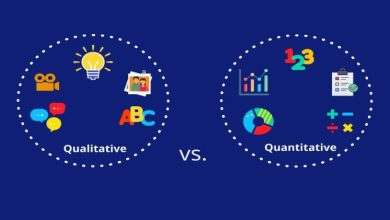Role of Business Analysis in Information Technology Projects

In Information Technology (IT), businesses are constantly challenged to adapt and innovate to stay ahead. This is where the role of business analysis becomes paramount. Business analysis acts as a bridge between the business objectives and the technical solutions, ensuring that IT projects align with the strategic goals of the organization. In this blog, we explore the significance of business analysis in IT projects, exploring its key functions, the significance of Business Analysis Courses and how it contributes to project success. Also, we’ll go through some of the Business Analysis Example to understand the current scenario.
Table of Contents
- Understanding Business Analysis
- Key Functions of Business Analysis in IT Projects
- Business Analysis Courses: Building Skills for Success
- Business Analysis Example: Realising Business Value through Effective Analysis
- Conclusion
Understanding Business Analysis
The fundamental tasks of business analysis are identifying business requirements, developing solutions, and assisting in executing these solutions. It includes various tasks, including obtaining and evaluating requirements, simulating business procedures, and evaluating the effects of change. To guarantee clear communication and a shared understanding of requirements, business analysts are intermediaries between various stakeholders, including IT teams and business users.
Key Functions of Business Analysis in IT Projects
Let’s explore some of the key functions of business analysis and diverse methodologies:
Requirement Gathering and Analysis: Business analysts are essential in gathering needs from stakeholders and recording them. They employ diverse methodologies such as interviews, seminars, and surveys to acquire knowledge on business processes, user demands, and system functionalities. Business analysts might find gaps, conflicts, or ambiguities in these requirements that need to be resolved for the project by examining them.
Solution Design and Evaluation: Following the collection of requirements, business analysts collaborate with stakeholders to create solutions that address the company’s goals. Models, prototypes, or mock-ups must be made to visualise the suggested solution. Business analysts also assess alternatives, considering elements like price, viability, and effect on the company.
Stakeholder Management: The success of IT initiatives depends on effective stakeholder management and communication. As a bridge between different stakeholders, business analysts ensure that everyone is aware of the project’s status and agrees with its objectives. They manage expectations, negotiate priorities, and encourage conversations to ensure the project adds value to the company.
Change management: IT initiatives often alter organisational structure, systems, and business processes. By spotting possible hazards, evaluating the effects on stakeholders, and creating plans to overcome opposition and guarantee the changes are adopted smoothly, business analysts are essential to managing these changes.
Business Analysis Courses: Building Skills for Success
Business analysts must always stay up to speed on the latest developments in their industry due to the vital role that business analysis plays in IT initiatives. An organised approach to gaining the required skills and remaining up to date with industry best practices is via business analysis courses. Stakeholder involvement, process modelling, requirements management, and change management are just a few of the many subjects covered in these courses, which provide professionals with the skills and knowledge they need to succeed in their positions.
Business Analysis Example: Realising Business Value through Effective Analysis
Imagine a retail corporation wishing to upgrade its online sales platform to improve customer satisfaction and boost sales. Understanding the present system and obtaining needs from several stakeholders, such as the marketing, sales, and IT departments, would be the first steps for a business analyst. The business analyst finds ways to enhance website navigation, expedite the purchase process, and customise the shopping experience by carefully examining potential prospects.
Working collaboratively with the IT team, the business analyst builds a solution incorporating a revised website interface, greater search capabilities, and interaction with customer relationship management (CRM) systems. The business analyst ensures that the solution satisfies technical requirements, fulfils user expectations, and aligns with business goals throughout the project’s lifetime.
The retail firm successfully introduced its enhanced online sales platform due to the business analysis work, which raises website traffic, improves conversion rates, and boosts customer happiness. This example shows how business analysis may lead to concrete commercial consequences by bridging the gap between technological solutions and business requirements.
Conclusion
To sum up, business analysis is essential to IT projects’ success since it ensures that the solutions meet stakeholder needs and business goals. Business analysts concentrate on tasks including requirement collecting, solution design, stakeholder management, and change management to help IT projects go more smoothly. The need for qualified business analysts is predicted to increase as the IT environment changes, making business analysis education and training crucial for workers hoping to succeed in this fast-paced industry.





